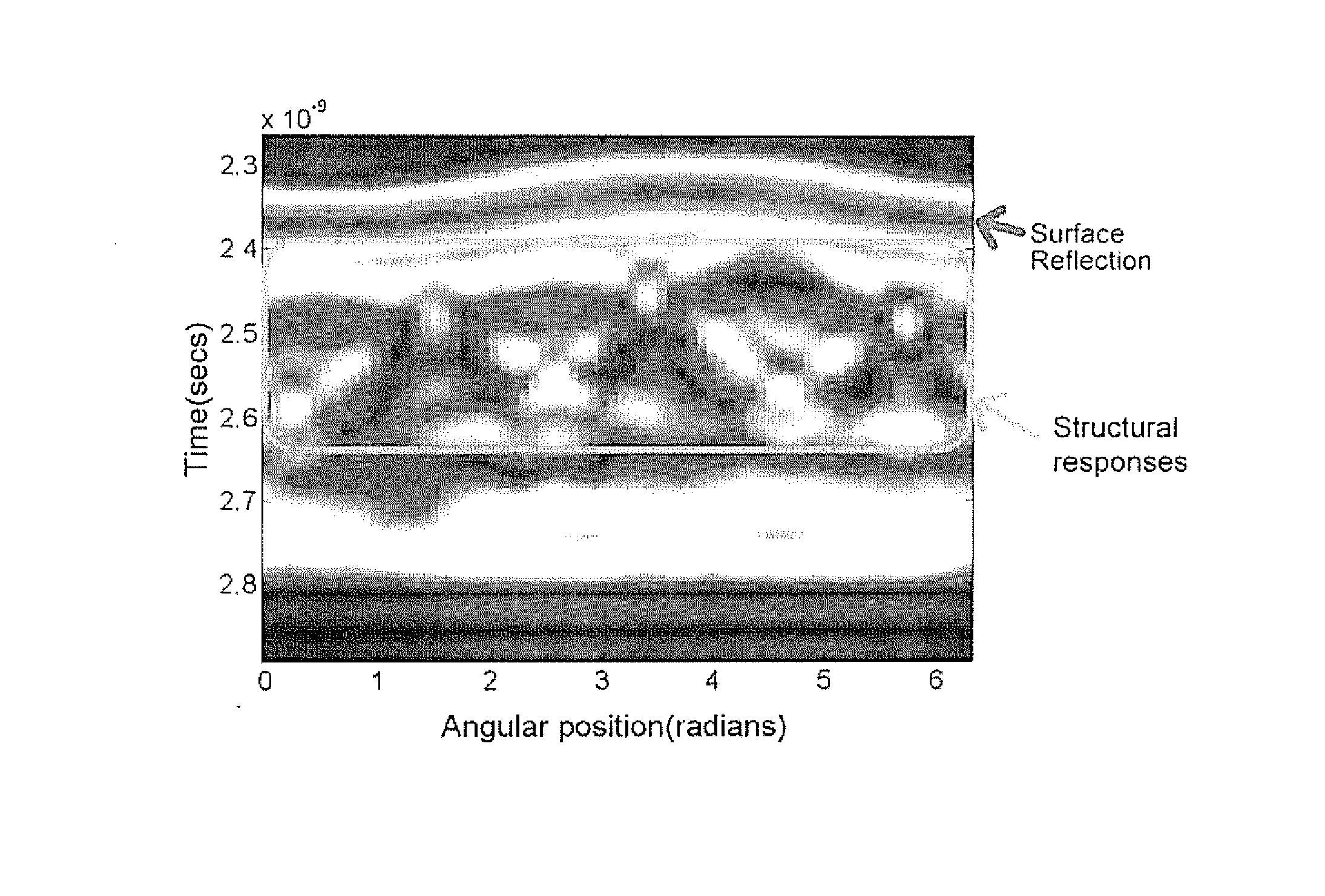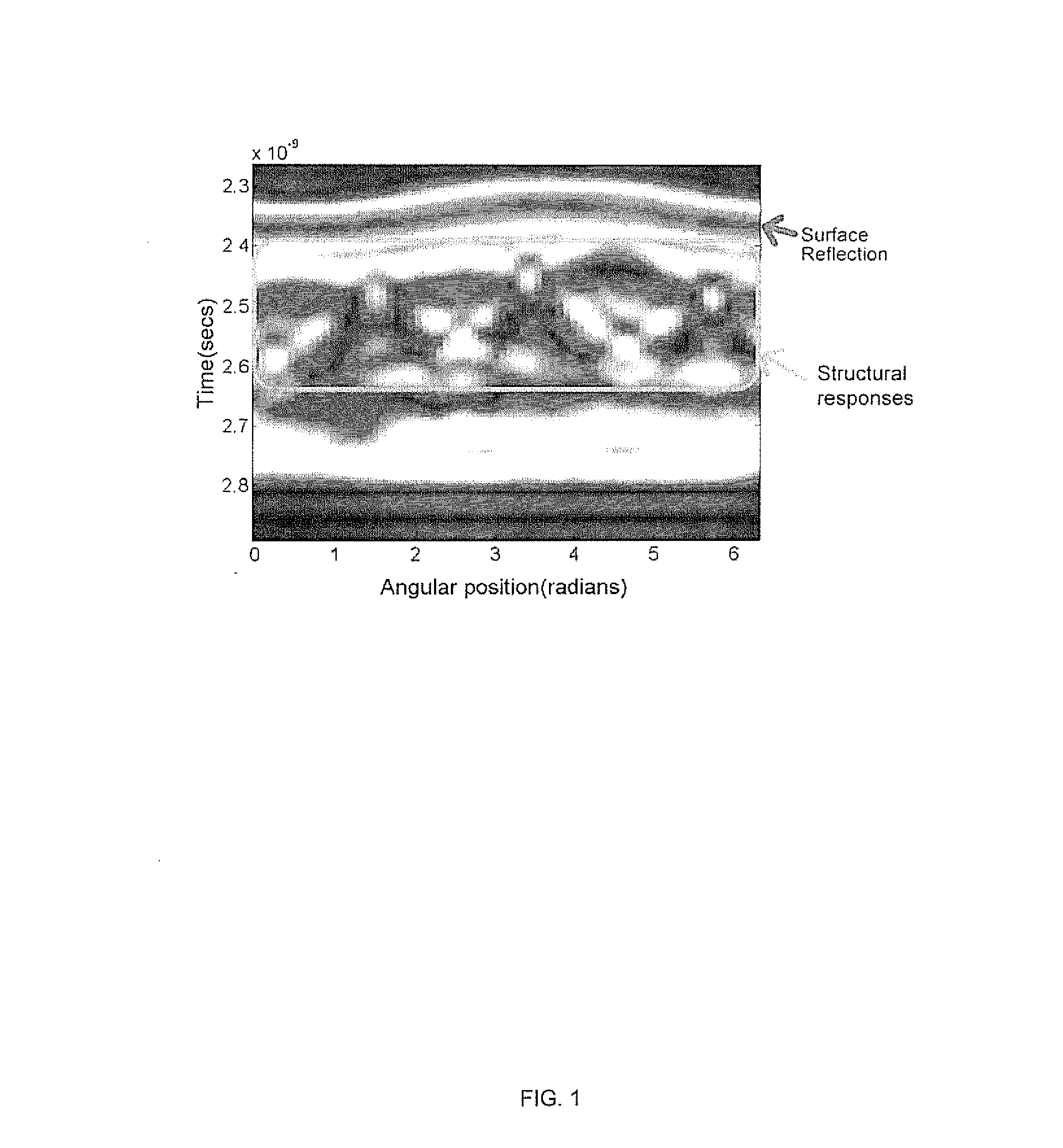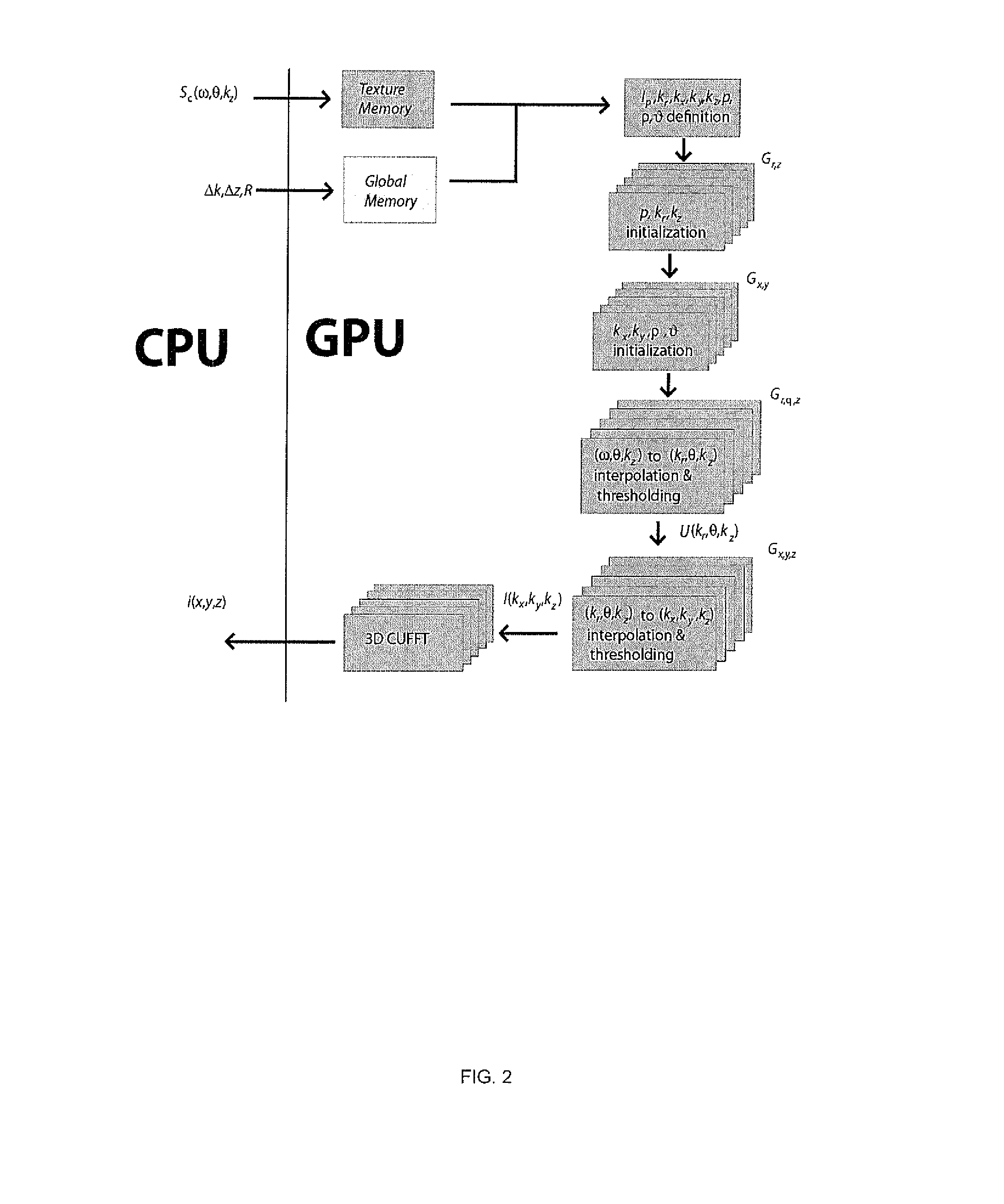Real Time Reconstruction of 3D Cylindrical Near Field Radar Images Using a Single Instruction Multiple Data Interpolation Approach
a near field radar and multi-data technology, applied in the inter-field field, can solve the problems of non-linear signature formation, execution time, and difficulty in correctly determining the dimensions and locations of the different scattering structures present in the scan area, and achieve the effects of significant reducing the reconstruction time, high performance computing capability, and low cos
- Summary
- Abstract
- Description
- Claims
- Application Information
AI Technical Summary
Benefits of technology
Problems solved by technology
Method used
Image
Examples
Embodiment Construction
Cylindrical SR Imaging.
Signal Model
[0098]Let us consider a cylindrical scan geometry with M scan planes defined along the z axis and N scan locations arranged in a circular pattern with a radius R at each plane. The irradiating antenna is facing towards the center of the scan plane. T point scatters are assumed to be inside the area delimited by the scan geometry. A waveform f(t) with a bandwidth B, is sequentially radiated from each scan location and the responses from the targets with the scan area are recorded at the same position. This signal is considered to have a length of L samples. For the scan location at (R, θ, z), the received signal can be expressed as:
s(t,θ,z)=∑q=1Tσqf(t-2Dq(θ,z)v)(1)
[0099]where v is the medium propagation speed, σq and (rp, φq, zp) are the reflectivity and polar coordinates of the qth target, and Dq(θ,z)=√{square root over (R2+rq2+(zq−z)2−2Rrq cos(φq−θ))}{square root over (R2+rq2+(zq−z)2−2Rrq cos(φq−θ))}.
[0100]In cylindrical SR scenarios, target refle...
PUM
 Login to View More
Login to View More Abstract
Description
Claims
Application Information
 Login to View More
Login to View More - R&D
- Intellectual Property
- Life Sciences
- Materials
- Tech Scout
- Unparalleled Data Quality
- Higher Quality Content
- 60% Fewer Hallucinations
Browse by: Latest US Patents, China's latest patents, Technical Efficacy Thesaurus, Application Domain, Technology Topic, Popular Technical Reports.
© 2025 PatSnap. All rights reserved.Legal|Privacy policy|Modern Slavery Act Transparency Statement|Sitemap|About US| Contact US: help@patsnap.com



